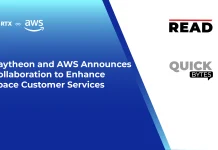Product information is crucial for e-commerce and digital customer experiences, including descriptions, tech specs, videos, and 360º photography. It needs to be stored and managed in a central source for easy accessibility. Product information management (PIM) is a major challenge for online retailers, with the market projected to grow to $16 billion by 2025. Let’s learn everything about product information management software and why it is important. .
What is Product Information Management?
Product information management (PIM) involves overseeing and enhancing product details and associated digital resources across various departments to offer a compelling product journey and effectively market the product across diverse sales and marketing avenues. A PIM solution acts as a master-data powered, process-oriented tool for team collaboration on product content. It acts as a centralized hub to gather, organize, regulate, enhance, and disseminate product information and content to marketing, sales, and eCommerce platforms.
What is Product Information Management Software?

Product information management software streamlines the collection, management, and enhancement of product data within businesses. Acting as a central hub, it ensures data integrity while facilitating the creation and distribution of product catalogs across multiple sales and eCommerce platforms.
By utilizing PIM software, businesses can enjoy various advantages, such as accelerated creation of engaging product presentations, enhanced consistency and precision in product details, and simplified collaboration among teams responsible for product management.
What is a PIM platform?
A PIM platform is a business tool that centralizes the collection, organization, enhancement, and dissemination of product information. Acting as a single source of truth, it empowers organizations to create compelling product experiences across various sales and eCommerce channels.
Also Read : The Definitive Guide to Data Monetization: Maximize Your Revenue
- Product Information Consolidation: PIM platforms streamline product data management by consolidating all information onto one platform. They gather data from internal systems and external suppliers, ensuring it is stored in a structured manner. This centralized approach guarantees that accurate and current product information is accessible throughout the organization.
- Multi-Channel Distribution: PIM platforms are essential for managing and distributing product information across multiple sales channels. They seamlessly integrate with eCommerce platforms, CRM systems, and other business tools to provide consistent and updated product data to customers. PIM platforms facilitate efficient management of product catalogs, sales strategies, and marketing messaging, particularly in dynamic eCommerce environments where product information frequently changes.
- Digital Asset Management: PIM platforms often include features for managing digital assets associated with products. Users can attach videos, images, documentation, and other assets to product profiles within the PIM system. This integration with digital asset management functionality ensures that relevant assets are linked to the appropriate products, facilitating easy access and distribution as needed.
Which Are The Best Product Information Management Software?

Here are some of the leading product information management software solutions:
- Agility Multichannel: It is considered one of the best PIM software for 2024. It offers comprehensive features including data onboarding, business process tracking, and data enrichment.
- Syndigo: It is a PIM solution that provides an Active Content Engine. It offers easy management of product information and has more than 250,000 unique product attributes, making it suitable for detailed products.
- Pimcore: It is a PIM software that harmonizes technical, sales, and marketing product information into a single repository. It allows users to share any type of digital data.
- Informatica MDM Product 360: It is a comprehensive master data management (MDM) platform that offers a holistic hub of information for product management.
- Catalog Builder: It is an in-house catalog design and management software system that helps manage marketing reach and customer convenience through product content and customer-focused catalog options.
- io: It combines PIM and digital asset management for an all-in-one product content solution. It allows users to share all product information and media.
These are just a few examples of the best product information management software available. It’s important to evaluate your specific business requirements and budget before choosing the right software for your needs.
What Data Is Managed by a PIM System?
A PIM system efficiently manages a diverse range of product information, including:
- Basic Data: This encompasses essential product details such as Universal Product Codes (UPCs), SKUs, article numbers, names, titles, and usage suggestions.
- Assets: PIM software stores digital assets like images, videos, and GIFs to visually showcase products and their usage.
- Technical Information: Details like fabric, materials, size, color, weight, measurements, and warranties are stored in the system to provide comprehensive product information.
- Marketing Information: PIM systems handle customer personas, keywords, SEO-related data (e.g., Google categories, mobile-friendly descriptions, Amazon titles), enabling easy updates over time.
- Sales Information: Pricing, customer reviews, and testimonials are stored to assist sales processes and website promotion.
- Localized Information: Multilingual copy, regional currency systems, and other location-specific descriptors ensure a consistent customer experience across different regions.
- Taxonomy: PIM software catalogs product variations, relationships, and categories, forming the foundation of a company’s product structure.
- Design Information: Style guides and designer notes stored in PIM systems ensure cohesive branding and creative direction in marketing campaigns.
- Emotional Information: PIM solutions store content aimed at resonating with specific customer personas, including imagery, product descriptions, and other assets that foster emotional connections with buyers.
Who Needs a Product Information Management System?
A product information management software benefits various roles and organizations involved in product management and marketing:
- Product Managers: They use PIM solutions to ensure accurate and up-to-date product information is available to the marketing team. PIM tools allow them to update product specifications throughout the product lifecycle, ensuring everyone has access to the latest data.
- Product Marketers: PIM systems serve as a central repository for product information, enabling marketers to access accurate details for developing product narratives and strategies. They use PIM tools to request and assign copywriting, photography, and videography for new products, ensuring consistency in messaging and branding.
- Creators (Copywriters, Photographers, Designers): Creators rely on product information management software systems to access product information that guides their projects. Whether it’s crafting compelling copy, designing visuals, or creating multimedia content, PIM solutions provide them with the necessary details to produce accurate and strategic deliverables efficiently.
- E-commerce Managers: E-commerce managers utilize PIM systems to syndicate product listings to various e-commerce platforms. PIM tools help them ensure that product data and content are consistently updated and distributed across all channels, enhancing the customer experience and driving sales.
- Agencies: Agencies leverage PIM software to access and enrich client product information for syndication to different marketing channels. PIM systems enable agencies to optimize product descriptions and marketing content, associate digital assets with product information, and streamline the process of exporting data to various syndication channels.
Overall, a PIM solution benefits organizations by improving collaboration, maintaining data accuracy, and streamlining workflows across product management and marketing teams, ultimately leading to increased revenue and customer satisfaction.
Final Takeaway
Product information management platforms centralize product information, ensuring consistency and accuracy across sales channels. They improve data quality, streamline distribution, and automate tasks. Leveraging product information management software solutions enhances product experiences, optimizes resources, and strengthens security.




